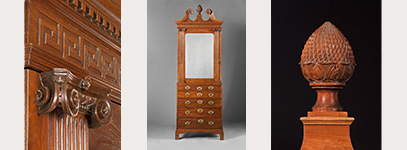 |
On 5 April 1778, a fifty-seven year old, Scottish-born cabinetmaker and master builder named Robert Deans sat down to complete his last will and testament. Three members of the London building trade, a stonemason named Andrew Ramsey and carpenters John Stephen and Hugh Martin, gathered in Deans’s townhouse at 48 Chandos Street to witness his signature. Two of Deans’s colleagues in the London furniture trade, upholsterer David Watson and carver and glass grinder Alexander Murray, were appointed to serve as his executors. Deans bequeathed his “worldly estate” to the children of a deceased brother, Alexander, who had been a farmer in Tranent, Scotland, a parish located just sixteen miles east of Edinburgh. He added that if his sister Mary was still alive at the time of his death, she was to receive an annual stipend of five pounds sterling.[1]
Five days later, Deans added a codicil to his will that was more touching and personal. A childless widower, Deans wrote a letter at the bottom of the page addressed to a good friend, Mrs. Watson. In it, he asked her to see that he was buried in Edinburgh “in a decent manner,” that his funeral included a coach and a hearse but without black feathers on the horses, and that he was laid to rest as close as possible to the grave of his recently deceased wife Marion and her first husband, John Currie, and in the same grave, if possible. He asked Mrs. Watson to take special care of his wife’s silver watch, valued at twelve guineas, and to dispense mourning rings to a small circle of friends. His personal clothing and household linens were to be shipped to his family in Scotland. Everything else, including books, furniture, and a set of silver spoons, was to be sold in London and the proceeds divided between his nephews. In both the will and the codicil, Deans made no reference to his old friends in Charleston, South Carolina, or the real estate he still owned there, and, most importantly, he never mentioned the name of his persistent nemesis, Jean Bell.
Thirty years earlier, in 1748, the Edinburgh widow Jean Bell had initiated a lawsuit against Deans claiming that he was her legal husband, not Marion Currie’s, and that he had also fathered her deceased child.[2] The court case included testimony from eighteen witnesses who provided intimate details about the personal lives of both Deans and Bell, including who slept with whom, when, where, and how often. Deans’s loss of the case explains why the young craftsman fled Scotland and moved to Charleston, South Carolina, in 1749—to escape Jean Bell. But the lawsuit lasted for more than two decades. These court documents, combined with other records and the surviving correspondence of one of his South Carolina patrons, provide a rare glimpse into the private and professional life of Robert Deans (1721–1781), a Scottish craftsman whose emigration facilitated the transmission of British Palladian design from Edinburgh to Charleston.
Early Career in Edinburgh
On 2 April 1721, Robert Deans was born in Tranent, Scotland (Figure 1), and was christened in the parish church nine days later.[3] His parents, Robert Deans and Helen Bartleman, had been married there five years earlier and had two children, Alexander (b. 1716) and Helen (b. 1719), by the time Robert was born.[4] Based on the cabinetmaker Robert Deans’s will, we can assume that his father was a tenant farmer whose farm passed to his eldest son, Alexander, while the younger son Robert was apprenticed to a trade around the time of his fourteenth birthday. The court documents in Bell v. Deans describe Robert as having been “bred a wright in Edinburgh.” Therefore, he seems to have been apprenticed to an Edinburgh woodworker around 1735 and, according to the Scottish guild system, would have been cross-trained in both the architectural and furniture-making aspects of professional woodworking.[5] The first mention of Robert Deans as a practitioner of his trade was on 17 October 1740 when he witnessed the marriage of his older brother and was recorded in the Tranent parish register as “Robert Deans, Wright.”[6]
Three years later, in 1743, Deans took lodgings in Edinburgh at the house of the widow Jean Bell in the Fishmarket Close, in the center of town (Figure 2). Also known as Jean Henderson, Bell operated a small shop at the Market Cross on the High Street (Figure 3). Her husband William Henderson, a merchant, had died the previous year, shortly after declaring bankruptcy.[7] They had married in 1736 and had had two children, who apparently died in infancy. Henderson had left Bell with little more than the small house and shop and a teenage step-daughter named Maitland Henderson who continued to live with her step-mother. The house, a generic term in Edinburgh for an apartment of any size, consisted of only two rooms: the main chamber, which Bell let to the then twenty-two year old Robert Deans, and the kitchen, in which she and Maitland slept in separate beds. Within a short period of time, Bell and Deans entered into a sexual relationship, although Deans, according to one of the court witness’s testimony, “had not attained to much above a half of Bell’s age.”[8]
Over the course of five years their relationship became both contentious and litigious, so the greatest portion of the new evidence for Robert Deans’s life and career in Edinburgh comes from the records of the Commissary Court. This court heard matrimonial cases including those in which one party alleged the existence of a marriage denied by another party: a declarator of marriage. A counter action, known as a declarator of freedom, might be launched in retaliation to a declarator of marriage. The context for such cases was the increasing occurrence in eighteenth-century Britain of irregular marriages—marriages contracted without the ceremony or publicity normally associated with a wedding. The prime motivation for an irregular marriage was secrecy: to outwit disapproving relatives, to avoid open breach of an apprenticeship agreement, or to seduce a vulnerable young woman. In Edinburgh, throughout the eighteenth century, a number of unemployed, sometimes disgraced, ministers were available to marry couples cheaply, in privacy, and with no awkward questions asked. It is estimated that a third of all marriages in Scotland at this time were of this nature.[9] Such marriages were valid and were generally unchallenged; however, a few did not prosper and became the subject of court cases. The typical process involved lawyers submitting each side of the story with statements taken from witnesses. The Commissary Court could then decree that a husband who had abandoned his wife should pay aliment, or financial support.
In all, eighteen witnesses were called to testify in the Bell v. Deans case. The witnesses consisted of twelve women and six men. Notably, the witnesses’ occupations, including those of their spouses, represented a cross-section of eighteenth-century Edinburgh’s working middle class; the list of occupations included a midwife, a wet nurse, a printer, a tailor, a lawyer, two servants, two shoemakers, three merchants, a fencing master, and a post office clerk.
Testifying in court, Jean Bell’s stepdaughter, Maitland Henderson, revealed that she had seen Deans and her step-mother “frequently in bed together,” noting that they were “sometimes together in the Bed of the Room and sometimes in the Bed in the Kitchen” and “sometimes […] when at the same time the deponent was lying in the other bed in the kitchen.” The testimony of Helen Henderson, a servant to one of their next-door neighbors in the Fishmarket Close, was equally salacious: she said that Deans had stayed with Bell “for some time as a Lodger” but she added that “in the May [1745] a minister who was attending the General Assembly” had also lodged in Bell’s house and “took up the Bed Room where [Deans] usually lay.” Helen Henderson said that “there was no other bed in the house than that in which the minister lay” and that during his stay, she overheard “a foot which she took to be Mr. Deans” approach Jean Bell’s “bed on the floor.” Similarly, Mary Wallace, the wife of a fencing master, swore that Bell and Deans had “lived together in a house in the fish market close” and that she “one time saw them lying in a Bed in the kitchen” and “that he was in naked Bed and Bell opened the door and they came in and sat in the kitchen while he was lying in the said bed and Bell sat down at his bedside.”
Deans’s and Bell’s relationship coincided with a momentous event in Scottish history. On 17 September 1745, Edinburgh was taken without resistance by the Jacobite army of Prince Charles Edward Stuart (1720–1788), known to his Highland supporters as Bonnie Prince Charlie. Four days later, on 21 September, the Jacobites routed the Hanoverian government’s forces at Prestonpans (Figure 4), located nine miles east of Edinburgh and close to Dean’s hometown of Tranent. The mood in Edinburgh was one of horror: the Highland invaders had effectively conquered Scotland.[10] The next day, on 22 September, Jean Bell delivered a female child acknowledged by Robert Deans as his own, and the presence of the conquering army helped many of the witnesses to clearly remember the details of the birth.
The midwife, Helen Brown, recalled that on “the very day on which the Battle of Preson Pans [sic] was fought” she was requested by “Mrs. Miller, a Cousine [sic] of Bell, to come and deliver Bell of a Child.” Brown said she had assisted Bell previously “when married to William Henderson, yet she had not then heard of her being again married.” Mrs. Miller assured Brown that her cousin “was privately married and that it was necessary to keep it secret on account of some debts and because of the Freedom of the Town which she had by her first husband.” They agreed that “for greater privacy” Bell would give birth in Brown’s house, so Bell “came home to her house that very night.” The wet nurse, Agnes MacDonald, who lived in the nearby town of Duddingston (Figure 5), recalled that “on Monday after the Battle of Prestonpans” she was called to Helen Brown’s house and engaged “to nurse a Female child which was there.” She noted that Robert Deans was also present “and agreed to her nursing the Child.” The next day, MacDonald went to Brown’s house “in order to receive the said Child” and to take it to her house in Duddingston. Mrs. Brown then told her that “the Child’s name was Jean Deans and that the father and the mother were privately married and the marriage kept secret.”
Deans and Bell placed the child in MacDonald’s charge, as it was common practice to have children wet-nursed away from the filthy conditions of the city. The siege of Edinburgh may have contributed to their decision, but it probably also reflected Bell’s desire to conceal the birth as much as possible. She and Deans visited their child in Duddingston, which was close to the main encampment of the Highland army. After six months, the baby was transferred to the care of Mrs. Smeally, who had nursed Jean Bell’s previous children, and Bell informed Smeally that “Robert Deans and she were married together and that, telling of this, she wept saying that she thought she would never have married again.” After five months, the child grew sick, and one of Smeally’s clients described Jean Deans “as a sickly and decayed child” and told her that “he would not allow his child to stay any longer with her unless she sent away Jean Deans.” Six weeks later, the child died, an unsurprising fact for a period when urban infant mortality rates approached 40 percent.[11]
Mrs. Stalker, the wife of a shoemaker in Duddingston, gave an elaborately detailed testimony on the circumstances surrounding the funeral:
Mr. Deans came out in a Chaise and in mourning to the Burial and Bell came out by herself on foot with the dead Linnens. That Mr. Deans behaved and entertained those who were at the Burial as the father of the Child and that he and the pursuer took an egg in the deponent’s house to [their] dinner and behaved to her as his wife in so far that when the deponent was filling about a drink after dinner he said to the deponent give my wife a drink pointing to the pursuer and at other times when speaking to her called her my dear. Mr. Deans and Bell came [went] in to Town in the same Chaise together and Mr. Deans desired [Stalker’s] husband to invite some of the honest neighbours in the place to witness the Burial of the Child, which he accordingly did, and Mr. Deans after the Burial sat and drank the dredgy with them.[12]
Clearly, at least for the purposes of the child’s funeral, Robert Deans was content to play the role of husband to Bell and father to their deceased child, Jean Deans.
Jean Bell and her witnesses swore that the two of them had been secretly married in 1743 and that the child was privately baptized shortly after the birth. Jean Bell’s lawyer stated that the baptism had been performed by an Episcopal minister, named Mackenzie, and not by a clergyman from the Church of Scotland.[13] Their decision to avoid baptism at the official parish kirk, St. Giles, led to a series of unwelcome enquiries from the Kirk Treasurer, Robert Fleming, and his assistant, James Gow. Fleming, the printer of the Edinburgh Evening Courant, one of the town’s two newspapers, and Gow, a tailor, were respected members of the parish. Among their official duties was to discover bastard children, to fine the mothers, and to force public repentance from the fathers. The identification of the father helped prevent the child from becoming a financial liability to the parish. Gow testified that “while the Highlanders were in Town he received an information that Bell was delivered of a Child, upon which he went to her house and called for her.” Both Deans and Bell were there and “owned that they were married persons, and that the Child of which Bell had been delivered was their Child, and that the Town of Edinburgh should not be troubled with it.”
In late 1746—the same year of Jean Dean’s death—the relationship between Robert Deans and Jean Bell began to unravel. Bell moved from the Fishmarket Close to a house at the foot of Niddry’s Wynd, while Deans began to lodge separately at Multree’s Hill, a settlement located immediately outside the town walls to the north (Figure 6). The following year, in 1747, Deans paid the arrolls, or deposit, on a house in Baillie Fife’s Close for Bell and was seen by witnesses coming and going, apparently lodging with her intermittently. But matters were quickly coming to a head.
By November of 1747, Deans was courting yet another widow, Marion Currie. Mrs. Currie was the daughter of Edward Campbell, a shoemaker on Multree’s Hill, who in 1735 had married John Currie in St. Cuthbert’s Church, which was the parish for those living outside the city walls to the north and west, located at the foot of Castle Hill.[14] As their courtship progressed, Mrs. Currie began to hear rumors of a child and a possible marriage with Jean Bell. To assuage her concern, Deans accompanied a Mrs. Young of Prestonpans, apparently a close friend or relation of Mrs. Currie, to see Jean Bell and “to ask her the reason why she had made such a noise” and was attempting to stop “the defender’s marriage with the said Mrs. Currie.” Bell acknowledged to them that she “was not married to the defender” and “neither could she hinder the marriage,” but she declared that Deans had nevertheless ruined her “by living upon her.” According to Mrs. Young, Deans replied that he had always paid Bell “sixpence for the dinner […] and had paid her weekly But that if he was owing her anything he would pay it.” Bell replied that “he was owing her nothing.” Mrs. Young then asked Bell what she had meant “by saying that the Defender has ruined her” to which Bell answered “that she had bought better meat than his sixpence could afford.” Young asked directly whether she had born Deans’s child and whether “he had been over Familiar with her.” Bell then answered “with some passion, what do you mean to say so, do you take me for a whore?”
The lawyer William Elliot, also a friend of Mrs. Currie, approached Robert Fleming to know “if Deans had been at any time in his hand as Kirk Treasurer for a Bastard Bairn,” or child. Fleming himself visited Jean Bell, who gave him a letter, which he then gave to Elliot, who in turn showed it to Mrs. Currie, “upon which Mrs. Currie seemed to be in some confusion and disorder.” Addressed to Fleming and dated 23 December 1745—three years before the court case—the letter read:
Sir, my wife informs me that your man has been several times very impertenent [sic] to her by asking her Questions at her that when answered he won’t believe and I being much in the Country oblidges [sic] me to write to you to lett [sic] you know that I was married to that woman, that he troubles, near three years ago, and satisfied the Kirk Treasurer and his man both. So I think he is very impertinent to trouble her and for the time to come you’ll discharge him and in so doing you will oblige[.] Your humble servant, Ro: Deans.
Deans then took matters into his own hands and visited Fleming. He successfully convinced Fleming that there had been no marriage and “took a discharge from him as Kirk Treasurer for his Fornication to Bell for which he paid a small sum […] for the use of the poor.” Bringing matters to a head, Marion Currie went to see Jean Bell herself accompanied by her brother-in-law, the merchant John Taylor. Jean Bell declared to Mrs. Currie that if Deans “had a conscience within his Breast that would allow him to marry any other woman, he might do it and that she had nothing to say.”
On 28 December 1747, banns were read at St Cuthbert’s Church for the marriage of Robert Deans to Marion Currie.[15] The wedding took place on 5 January 1748 at the mansion house in Gilmerton, located just four miles southeast of Edinburgh (Figure 7).[16] The newlywed couple then took up residence in The Pleasance, a neighborhood located on the south side of Edinburgh.
Bringing matters to a head, two weeks later, on 11 January, Bell commenced her suit in the Commissary Court, and Deans was forced to launch a countersuit four days later. As was common practice, the two processes were conjoined and the eighteen witnesses were heard between March and May of 1748. Bell’s lawyers, John Watson and Robert Dick, opened her case by stating that she and Deans were married irregularly in 1743. Bell claimed never to have known the name of the minister or a friend of Deans who witnessed the event, and she named a woman who had since died as the only other witness. She was able to lay before the court the letter purportedly written by Deans to satisfy the Kirk Treasurer. Deans’s lawyers, Andrew Deuchar and Charles Leslie, argued that that the letter was a forgery and that Deans had no motive to either marry Bell secretly or to conceal the birth of a legitimate child. Moreover, Deans had left Bell’s house in the summer of 1746 and “did not by any circumstance of his conduct show that she had reason to consider him her husband.” Deans cast doubt upon the letter by denying that he ever “subscribed his name […] thus Ro: Deans […] having always and uniformly subscribed his name thus Robtt Deans.” Seven bills and an account book kept by Deans were shown to the court to substantiate his assertion.[17]
In spite of these arguments, on 25 November 1748, the Commissaries found for Jean Bell. Deans appealed and the case dragged on until July 1749 when the Commissaries upheld their previous ruling. This was a disaster for Robert Deans and Marion Currie, his wife of eighteen months standing. In addition to nullifying their marriage, Bell could now pursue Deans in court for aliment. Robert Deans and Marion Currie were forced to make the only logical decision they could; they packed their belongings and boarded ship to begin a new life in South Carolina.
Edinburgh Furniture and Architecture in the 1740s
The account book and bills presented in court suggest that by 1748 Robert Deans was a twenty-seven-year-old wright working in Edinburgh on his own account. Luckily, Sebastian Pryke’s comprehensive survey of the surviving Edinburgh furniture makers’ bills in Scottish household accounts discovered a single item signed by Deans.[18] His bill (Figure 8) for a “press bed with a canvas bottom, wood and workmanship furnished,” priced at one pound, was settled on 3 October 1749, shortly before his migration.[19] A press bed was a particularly Scottish form, a folding bed concealed within a cabinet that had the appearance of a clothes press. It was a space-saving device for the use of servants or younger men, as the canvas support for bedding folded away with the wooden framework.[20] Deans’s press bed was made for the household of Andrew Fletcher, Lord Milton (1692–1766) (Figure 9), who was then one of Edinburgh’s most important political leaders.
|
|
From the standpoint of Lord Milton, this was not a particularly important piece of work. Milton was known to patronize many of the best artisans in Scotland, placing Deans in distinguished company. Today, the bill from Robert Deans rests alongside dozens of other more substantial accounts from fifteen different wrights and upholsterers who worked in Edinburgh throughout the 1740s and 1750s. Edinburgh’s most fashionable furniture maker, Francis Brodie (1708–1782), worked for Lord Milton on several occasions. From his cabinet shop, which was called Palladio’s Head, Brodie advertised a “Variety of Furniture in the neatest and most fashionable Manner, with Picture and Glass frames carved and Gilded, as also House Carpenter and Joiner work done by the best workmen” (Figure 10).[21] Could Robert Deans have been trained as one of Francis Brodie’s workmen? Brodie’s clientele included much of Scotland’s aristocracy with leading figures such as the Duke of Gordon and the Earl of Dumfries, as well as Lord Milton. In 1748, Brodie submitted Milton an invoice for two dressing mirrors, a wainscot oak chest of drawers, a wainscot oak table basket, and repairs to a copper japanned tea table, totaling three pounds, four shillings, six pence.[22]
Among the other well-recognized Edinburgh names in Milton’s accounts is that of Alexander Peter (working 1728–1772), who is perhaps best known for his work in the shadow of Thomas Chippendale at Dumfries House.[23] His accounts with Lord Milton for the period from January 1742 to December 1750 amounted to forty-eight pounds, eleven and a half pence. He was continuously employed for routine household tasks such as taking down and putting up looking glasses, pictures and leather hangings, and for mending beds, tables, chairs, even a hen’s crib, and a coffee mill.[24] Newly made items, such as a “chest of solid mahogany drawers including casters,” priced at two pounds, two shillings, were relatively few in number. Interestingly, however, on 10 November 1749, Peter supplied Milton with a press bed, described as a “folding up bed inclosed [sic] with wood upon ye back, ends & top including canvas bottom” for one pound, sixteen shillings.[25] The Edinburgh cabinetmaker James Stark (working 1733–1774) also fulfilled orders for some of Milton’s new furniture ranging from eight ribbon-backed mahogany chairs with leather bottoms and brass nails, priced at seven pounds, twelve shillings, to a wainscot oak dressing table with Marlborough feet for seven shillings.[26] Like Peter and Deans, Stark also made press beds for Lord Milton priced at one pound, sixteen shillings each, which was the same price as Alexander Peter’s. An apparently ambitious younger craftsman, Deans underpriced the two older, more established cabinetmakers for his press bed by sixteen shillings. But had Deans perhaps learned to make this Scottish furniture form during an apprenticeship with either Alexander Peter or James Stark?[27]
For a young cabinetmaker like Robert Deans, Lord Milton would have been an important patron. Born Andrew Fletcher in 1692, he took the title Lord Milton on his appointment to the judiciary in 1724 and between 1735 and 1748 he held the office of Lord Justice Clerk, Scotland’s second most senior judge. Milton was the political and personal agent in Edinburgh of the third Duke of Argyll, who between 1743 and 1761 controlled all government patronage in Scotland and effectively managed Scottish civic society in the interest of the Whigs. The Fletchers were minor lairds, established at Saltoun in East Lothian. Although personally successful and highly influential, Lord Milton did not enjoy the wealth of a great nobleman with large-scale landholdings. In addition to his family’s estate at Saltoun, fourteen miles east of Edinburgh, he purchased in 1733 a smaller property at Brunstane, located just three miles east of the city (Figure 11). Here he set out to improve the agricultural productivity of the estate, as his father had done at Saltoun, while also employing William Adam (1689–1748) to modify the seventeenth-century Brunstane House.[28] Adam was Scotland’s pre-eminent architect, building in the Palladian style across the country. Following his death, his practice in Scotland was continued by his son John (1721–1792), while his younger son Robert (1728–1792) embarked on the grand tour that would lead to his becoming the most fashionable architect in Britain.[29]
In the mid-1740s Lord Milton bought and demolished the deceased Earl of Roxburgh’s house on the Canongate, the thoroughfare connecting Edinburgh to the Royal Palace of Holyroodhouse. On the site arose Milton House (Figure 12), completed after William Adam’s death in 1748 by John Adam, and the appearance of it engraved by T. Smith in the 1760s for Vitruvius Scoticus (Figure 13).[30]
Perhaps even more important to Robert Deans at the time was Lord Milton’s wife, Elizabeth Kinloch (d.1782), who was sister to Sir Francis Kinloch (1676–1747), third baronet of Gilmerton, and to James Kinloch (d.1757), a wealthy merchant and planter in South Carolina. In fact, Deans might have first heard about South Carolina from Lady Milton, and he could have had no finer letter of introduction. James Kinloch had emigrated to South Carolina in 1703 and, by 1749, was the colony’s longest serving member of the Royal Council. He owned over 13,000 acres of income-producing rice and indigo plantation lands.[31] His son Francis Kinloch (c.1720–1767) had been elected to the Commons House of Assembly, and his step-daughter, Esther (Gaillard) Crokatt, was married to one of colony’s richest merchants in the trans-Atlantic trade. Indeed, by 1749 Esther’s husband James Crokatt (d.1776) had already made enough money to retire from business, move to London, buy an English country house, and leave two of his former clerks, Benjamin Smith (1717–1770) and Henry Laurens (1723–1792), to oversee his mercantile activities in Charleston.[32]
As we shall see, these connections proved vital to Robert Deans. While we do not know the exact nature and location of his early professional training, his affiliation with Lord Milton clearly placed him in and among many of Edinburgh’s most influential artisans, and in the midst of craftsmen who were closely associated with popularizing the British Palladian style in Scotland and beyond.
Arrival in Charleston
Deans and his wife survived their oceanic journey, and just six months after the Commissary Court’s ruling, on 29 January 1750, Deans placed his first advertisement (Figure 14) in the South Carolina Gazette:
ROBERT DEANS, Joiner from Scotland, designing to follow his business here, gives notice that (at the next tenement to Mr. Bissett talyor in Church-street) all kinds of Cabinet and joiners work are done after the best manner, and at as low rates as any where in town. He has to sell, at said house, an assortment of lawn and check’d handkerchiefs, strip’d and check’d lawns for aprons, check’d linnens, Scots holland, oznabrugs strip’t and plain ticken and white threads, at very low rates, for ready money or country produce.[33]
Deans had obviously brought with him a sampling of textiles that he could sell for ready money in advance of commencing his joinery trade. Once landed, he connected quickly with Charleston’s burgeoning Scottish community. William Bissett (d.1754), his landlord, was also from Edinburgh, and would later bequeath his Charleston tenements on the corner of Church and Elliott Streets to his wife Mary and to his father, identified in his will as Kenneth Bissett, gentleman, of Edinburgh, Scotland.[34] Remaining true to his Edinburgh connections, in 1757 Deans witnessed a deed for Francis Kinloch, Lady Milton’s nephew, and in 1758 Robert Deans became a member of Charleston’s Scottish fraternal organization, the St. Andrew’s Society.[35]
Three months after his arrival in Charleston, Deans was joined by another trans-Atlantic craftsman who seems to have been instrumental to his success, a London-trained carver named Henry Burnett (d.1761). On 16 April 1750, Burnett advertised (Figure 15):
HENRY BURNETT House and Ship-Carver from London, gives this Notice, to all persons who may be pleased to have occasion, to employ him in the said business, that their work shall be done in the neatest and best manner, and on the most reasonable terms. Enquire at Mr. Thomas Bentley’s on Elliott’s wharff [sic].[36]
Burnett’s location at Elliott’s wharf was just a block from Robert Deans’s lodgings on Church Street (Figure 16), and surviving objects suggest that the two men may have formed an almost immediate partnership. However, unlike Robert Deans, nothing is known about Henry Burnett’s career before his arrival in Charleston, and he is mentioned in only a few subsequent records. In 1757, he married Mary Hamilton, the widow of a prosperous tailor, and agreed that the property from her first marriage would be held in trust for Mary’s “sole and separate use, without interference from Henry Burnett.”[37] He died in 1761, and his probate inventory listed the tools of his trade including a carver’s bench, gouges, a drawing board, and a “Lyon Carved & King’s Arms,” valued at two pounds.[38]
When Burnett and Deans arrived in 1750, Charleston was in the midst of a significant building boom, and the city could boast of at least forty-six carpenters and fourteen cabinetmakers. To Burnett’s great benefit, there had not been a professional carver in Charleston since Thomas Watson died in 1747. Charleston’s artisan community at the time could be divided into three distinct groups. First were the native-born craftsmen, like the carpenter Henry Bedon (c.1696–1762), who had trained and worked in a purely colonial setting. Second were the older British immigrants, like the cabinetmakers William Carwithen (c.1704–1770) and Charles Warham (1701–1779), who had arrived in Charleston as younger men and established their cabinet shops in the 1720s and 1730s. By the late 1740s, however, a new generation of British immigrants trained in the latest, most fashionable Palladian style was emerging and clearly on the ascent. Within this setting, Burnett and Deans rose quickly to the top of the city’s artisan community and were among a small group of British-trained craftsmen who succeeded in their trades, received many of the town’s most important commissions, and acquired significant wealth in land, personal property, and slaves. In addition to Burnett and Deans, this circle of elite craftsmen included an architect from Dublin, Samuel Cardy (c.1721–1774); a carpenter from Bristol, Benjamin Baker (d.1780); a slater and master brickmason from Devonshire, Humphrey Sommers (1711–1788); and Charleston’s best-known colonial cabinetmaker, Thomas Elfe (c.1719–1775), also believed to be from London. Therefore, it is not a coincidence that when Henry Burnett died, the court’s appointed appraisers for his estate were Samuel Cardy, Robert Deans, and Thomas Elfe (Figure 17).[39]
Burnett’s carving abilities are documented in the construction accounts for one of eighteenth-century Charleston’s most important building projects, St. Michael’s Church. Between 1754 and 1760, Burnett charged the church’s building commissioners for executing work valued at over one thousand pounds that included some of the most elaborate architectural carving that could be seen in Charleston at the time. Revealing his familiarity with Palladian architectural design, Burnett billed them for carving Ionic, Corinthian, and Composite capitals; modillion cornices; elaborately scrolled stair brackets; egg-and-dart moldings; embellishments with flowers and laurel leaves; a pineapple finial for the top of the pulpit (Figure 18), priced at twelve pounds; and a cherubim’s head with wings for the keystone on the upper level of the steeple, priced at five pounds, fifteen shillings.[40] During the roughly ten years between his arrival in 1750 and his death in 1761, Burnett was the preeminent carver in Charleston.[41]
Within a year of Deans stepping off the boat, he had made at least one other fortuitous acquaintance. In 1751 he joined John Drayton (c.1713–1779) of Drayton Hall in witnessing the will of Robert Yonge (d.1751), a wealthy planter and member of the Commons House of Assembly.[42] Yonge’s daughter, Lydia, was married to Drayton’s nephew, Thomas Fuller (1729–1789), so the will was clearly a family affair, and Deans’s presence as a craftsman among the Carolina planter elite is notable. First, their acquaintance could have given Deans access to Drayton’s private library. John Drayton appears to have owned one of the most impressive architectural libraries in colonial South Carolina with copies of works by famous British architects such as Colen Campbell, James Gibbs, William Salmon, and Isaac Ware, who were advocates of the new Palladian aesthetic and whose architectural pattern books inspired several buildings in the Charleston area—as well as the cabinet-on-chest, or lady’s closet, in the MESDA collection that can be attributed to Robert Deans (to be discussed below).[43]
Until recently, John Drayton’s architectural masterpiece, Drayton Hall (Figure 19), was thought to have been constructed between 1738 and 1742; however, dendrochronology has proven that the house’s original attic timbers were felled in 1747and 1748, so a revised building period from roughly 1748 to 1752 is now believed to be accurate.[44] This new dating for the house places Robert Deans with Drayton during its period of construction, and given the 1751 year of their witnessing the will, especially during its final phases of interior carving and finish carpentry. This new information suggests that a partnership between the newly arrived immigrants, Robert Deans and Henry Burnett, might have been responsible for the most stylistically up-to-date woodwork at Drayton Hall (Figure 20).
Admittedly, there are no surviving records for Drayton Hall’s construction to substantiate this theory, but Drayton’s building process was probably similar to that of his close friend and colleague, Charles Pinckney (c.1699–1758). The majority of the building records for Pinckney’s two-story Palladian mansion (Figure 21) on Colleton Square in Charleston survive intact. The Pinckney Mansion was built between 1745 and 1750, therefore overlapping Drayton Hall’s construction by several years. Interestingly, Charles Pinckney relied on a number of the colony’s native-born craftsmen for his building materials. John Pagett (1716–1747) and James Hartley (d.1759) provided most of the mill-sawn timber, and Zachariah Villepontoux (c.1698–1780) provided the majority of the bricks. Joseph Black (d.1757) served as the master brick mason, and John Williams (working 1745–1775), a free person of color, oversaw the carpentry and joinery, including a sixty-pound payment from Pinckney “to encourage him in his Carving work.”[45] Humphrey Sommers was apparently the only recent British immigrant involved in the construction of the Pinckney Mansion. However, as Drayton Hall was completed two years later, in 1752, John Drayton could have had access to the handiwork of Robert Deans and Henry Burnett and to their familiarity with the latest British styles from Edinburgh and London.
By 1756 Deans’s social acceptance and professional success in Charleston appear to have been solidified when he was inducted into the city’s Union Kilwinning Masonic lodge and described in the Masonic records as an “architect.”[46] Two years later, in 1758, he and his then-business partner Benjamin Baker submitted a plan costing fourteen thousand pounds for “undertaking and finishing the inside work of St. Michael’s Church.” It noted:
We the subscribers therefore have made out a Draught of the whole inside of the west front, having made a very Exact Calculation on thereof, will undertake to do the work agreeable to the Draught viz. the inside and west front with the great door, and the Dorick [sic] Cornice all round the Church, the inside to be of Cedar give finding timber & turning & carving and obliging ourselves to make the whole Church compleat [sic] according to the said Draught, for the sum of fourteen thousand Pounds Currency and to finish the same with utmost Expedition We are Honorable Gentlemen your most Obedient & Humble Servants,
Robt. Deans & Benjamin Baker
N.B. If Done in a [Plain] Manner Ten Thousand Pound.[47]
While Deans and his partner apparently were not selected for this important commission, it going instead to their British colleagues and compatriots Henry Burnett, Samuel Cardy, and Thomas Elfe, it did not slow down Deans’s success. In 1760, Deans was paid by the Circular Congregationalist Church one thousand, one hundred fifty pounds for “the Carpenter’s & Joiner’s Work” during its most recent renovations.[48]
By 1758, Robert Deans had made enough money as a cabinetmaker and joiner that he decided to become a Charleston land speculator and real estate developer. On 28 October, he purchased two lots at the corner of Queen and Archdale streets, opposite a lot owned by Thomas Elfe.[49] The cost of his purchase was fourteen hundred pounds. The next year, Deans mortgaged the property for twice that amount, twenty-eight hundred pounds, and apparently used the money to finance subdividing the lots and building new houses on them. The British historian Emma Hart, in her study of Charleston’s eighteenth-century development, described Deans’s economic daring by paying for the land and its subsequent development through a series of mortgages.[50] By the early 1760s, the two subdivided lots were known as Dean’s Square (Figures 22 and 23).
Deans’s last known private commission in Charleston was for the elegant new house of Henry Laurens (Figure 24). Completed in late 1763 or early 1764, it was a two-story brick house with a Dutch-style roof similar to the roof on the Pinckney Mansion. It originally stood within a large garden on the corner of East Bay and Laurens streets (Figure 25) in the then newly developed suburb of Ansonborough. The house was demolished around 1920, but writing five years earlier, Laurens’s biographer David Duncan Wallace could describe it:
The house is a plain, rather barn-like, square-built structure 38 feet 6 inches by 60 feet 7 inches on the outside, with jerkin-head roof, and consists of four large rooms downstairs and four up, a spacious attic, besides several small apartments… . As one enters the small hallway at the south amounting to little more than a vestibule, stairs on the left lead to the upper story and a door to the right admits to the library… . The library measures 18 feet 8 inches by 17 feet 2 inches. On one side of the broad chimney and wall the way across the back, save for the width of the hall door in the corner, there are built as part of the house high mahogany bookcases, whose beautiful glass doors, patterned in octagons with subordinate squares and triangles, express dignity and refinement… . To the east of the library is the dining room, whose dimensions of 27 ½ by 17 1/3 feet proclaim the hospitality for which it was designed. The paneled chimney measures 10 feet and ¾ inch across all the way to the ceiling. Immediately above is the ballroom, of the same proportions. Some of the mantels are of marble and some of simply carved wood. Simplicity of style and dignity of proportions, in keeping with the master’s taste in all things, mark all the apartments.[51]
Interestingly, the first floor plan described by Wallace bears a certain resemblance to that of Milton House as seen in Fig. 13 of this article. As to the interior, one of Laurens’s employees described the “Mahogany stairs,” which would have combined with the paneled chimneypieces and built-in mahogany bookcases with Chinese-patterned glazed doors to make a significant architectural statement, and placed it among Charleston’s most stylish houses of the period. Henry Laurens’s correspondence suggests that completing the house took longer than Deans had estimated. On 13 September 1763, he complained to a colleague that his “removal to Ansonborough” was “a Month or two behind by Mr. Dean’s delay.”[52] By 2 December, Laurens was still waiting, and Deans was elusive. He wrote Deans directly: “I am very sorry that I happen’d to be from home when you call’d upon me because I really did want to see you and wonder’d much at your keeping away so that I cou’d not help taking notice of it” and asking “if you were dead or alive.”[53] However, as we shall see, by the time Deans completed his work and Laurens and his family moved into their new house, Laurens was a satisfied customer who considered Deans to be a personal friend.
In the spring of 1764, Deans and his wife, Marion, with full pockets, repacked their bags and left Charleston for London. To finalize his affairs, he appointed the city’s Scottish-born silversmith Alexander Petrie (1717–1768) to act as his attorney.[54] Petrie advertised for sale in the Charleston newspaper the subdivided lots on Dean’s Square with the houses built by Deans.[55] Three were sold, but Deans appears to have retained ownership of at least some portion of his Charleston real estate investment until his death.[56] During his tenure in the city, he held only minor offices as surveyor of the Orange Garden and commissioner of the market, but Deans prospered and formed associations with some of the Charleston’s most important officials, men such as John Drayton, Henry Laurens, and Benjamin Smith.[57]
Charleston Furniture and Architecture in the 1750s
Because of Robert Deans’s early background and training, the attribution of the Charleston-made cabinet-on-chest, or lady’s closet, in the MESDA collection (Figures 26 and 27) to the Deans shop seems relatively easy. Robert Deans is simply the only cabinetmaker in mid-eighteenth-century Charleston who would have been familiar with the form. The lady’s closet was invented in Edinburgh and first documented in the cabinetmaker George Riddell’s 1722 account for a “fine Lady’s Closet with a Large Glase [sic] in the doore [sic]” made for Janet Inglis (d.1760), the wife of Sir John Clerk (1676–1755) of Penicuik House. Forty-seven years later the family ordered a replacement “Glass for Lady Clark’s [sic] Cabinet Door,” that measured 19-½ by 35 inches. In 1753, Francis Brodie, who was among the cabinetmakers patronized by Lord Milton, made a mahogany “Lady’s Closet” (Figures 28 and 29) for Anne Gordon (1709–1755), the wife of William Dalrymple (1699–1768), fifth Earl of Dumfries.[58] Luckily, these two pieces survive at Penicuik House and Dumfries House, respectively, to document what was meant by the Scottish term, “lady’s closet.” As an appropriate piece of bedchamber or dressing room furniture for aristocratic women, the essentials of a multi-functional lady’s closet were a lower chest of drawers for storing clothes, surmounted by an upper cabinet with small drawers for storing valuables, with the additional optional accoutrements of a folding or sliding writing surface, a dressing glass, pigeonholes for storing papers, and bookshelves for books, all of which could be locked and secured behind a large single-leaf looking glass door. Deans’s Charleston-made lady’s closet is the only known American example of this form (Figure 30).
The Charleston lady’s closet descended from its original owners, Benjamin Smith (Figure 31) and his wife, Anne Loughton (d.1760) (Figure 32), to their youngest surviving child, William Loughton Smith (1758–1812).[59] Benjamin Smith was one of Charleston’s most prominent merchants and, after 1755, served as the colony’s Speaker of the Commons House of Assembly.[60] His wife Anne proved equally important to his economic and political success, as her half-brother, Miles Brewton (1731–1775), was also Smith’s business partner.
The Smiths lived in a large, three-story brick house (Figure 33) built in the 1740s at the corner of Church and Broad streets, just a block north of William Bissett’s tenements where Robert Deans lived immediately after his arrival from Scotland. The domestic arrangement of their home was like the houses of many other well-to-do Charleston merchants (Figure 34). The first-floor front room was assigned to Smith’s public mercantile activities, while the two back rooms were private parlors; the dining room for public entertaining and the master bedchamber occupied the second-floor front of the house; the two additional rooms on the second floor and four rooms on the third floor served as the family’s private quarters. When Smith died in 1770, his Charleston appraisers would have been unfamiliar with the terms “lady’s closet” or “cabinet-on-chest,” and perhaps the “1 [Mahogany] Wardrobe,” priced at thirty pounds in Smith’s “Dining Room & Front Chamber” refers to the lady’s closet made in Deans’s shop. This was significantly more than the twenty-pound mahogany double chest and twice the value of the mahogany desk and bookcase in the same rooms. Alternatively, as Anne (Loughton) Smith had died and Benjamin remarried, the lady’s closet could be the “1 Mahogany dble. Chest of Drawers” mentioned in the Back Chambers. Valued at forty pounds, it was worth twice the amount of Smiths’s other mahogany double chest and was, in fact, the most expensive single piece of mahogany furniture listed in Smith’s inventory.[61]
Based on the doorway design from Plate XXVI in William Salmon’s Palladio Londoninsis (Figure 35), which was published in London in 1734 and one of the books listed in the Drayton library, Deans’s Charleston interpretation of a lady’s closet is overtly architectural. With carving that can be safely attributed to Henry Burnett, the scroll pediment with carved rosettes, pineapple finial, Greek key frieze, and Ionic fluted pilasters of the lady’s closet make it one of the best examples of Palladian-inspired furniture made in America (Figures 36 through 38). Many of these motifs appear in Burnett’s carving at St. Michael’s Church (Fig. 18), at Drayton Hall (Fig. 20), in a small handful of mid-eighteenth-century Charleston houses, and on two other pieces of Charleston-made furniture (Figs. 39 and 41; to be discussed below).[62] All of these objects, in both architecture and furniture, were made between approximately 1750 and 1760—when Robert Deans and Henry Burnett were both alive and actively working in Charleston. These objects suggest that Deans, with his Scottish training as a wright who would have been competent as both a cabinetmaker and a builder, and Burnett, as a professional carver, may have collaborated on more than one occasion in a substantial and meaningful way.
Previous scholars have attributed the highly ornamented architectural carving at both the Benjamin Savage House and the John Cooper House to Burnett.[63] But who else was involved in the construction and design of these Charleston houses? In light of the new evidence put forth in this article, Deans’s involvement with both the Savage and Cooper houses should be considered a distinct possibility. As previously mentioned, Robert Deans was described as an “architect” when he was admitted to the Union Kilwinning Masonic lodge in 1756. His work at Henry Laurens’s house included exceptionally fine woodwork with a mahogany staircase and built-in mahogany bookshelves with Chinese-patterned glazed doors. In Charleston deeds from the late 1750s and early 1760s, Deans was identified as a carpenter, implying that at some point he may have given up cabinetmaking in favor of designing and constructing larger, more profitable objects, like houses.[64]
A careful analysis of the three furniture pieces with carving attributed to Henry Burnett—the lady’s closet (Fig. 26), a desk and bookcase (Figures 39 and 40), and a dressing chest with cabinet (Figures 41 and 42)—reveals that they are not, as previously thought, from the same Charleston cabinet shop.[65] Both the desk and bookcase and the dressing chest with cabinet feature the same form of large drawer construction with bottoms composed of two beveled boards running parallel to the front, dadoed to the front and sides of the drawer frame and nailed to the back, and also dadoed into a central muntin that provides added support, and with the central muntin then dovetailed to the front and nailed to the back (Figure 43). This particular technique was relatively common in Charleston and appears in furniture made from the 1740s to the 1770s, which is, therefore, past the period of Henry Burnett and Robert Deans. The Smith family lady’s closet’s construction differs significantly from that of the desk and bookcase, which has a Heyward family provenance, and the dressing chest with cabinet that, mysteriously, descended in the Custis and Lee families of Virginia.[66] The lady’s closet features drawer bottoms composed of butt-jointed boards running perpendicular to the front, set within deep rabbets on the front and sides and nailed to the back, with the addition of mitered runners on the front and sides of the drawer frame (Figure 44) not seen on the other two examples.
The small drawer construction of the three pieces differs as well. The desk and bookcase and the dressing chest with cabinet have very similar small drawers with a single bottom board running parallel to the front and set within flush rabbets on all four sides (Figure 45). The lady’s closet’s small drawers feature a single board that once again runs perpendicular to the front and is set within rabbets on only the front and sides of the drawer (Figure 46). The case bottom construction is a third major distinction, as the bottom drawers on the desk and bookcase and the dressing chest with cabinet run directly on the bottom of the case with drawer stops (Figure 47). However, the lady’s closet bottom drawer sits above the case bottom and runs along the drawer blade and three mitered, single-piece bed blocks at the front and sides (Figure 48).
According to British furniture historian Adam Bowett, the construction techniques seen on the Charleston lady’s closet would have been relatively typical for a “right off the boat” urban British cabinetmaker trained in the 1730s and 40s, like Robert Deans.[67] While its overall design is significantly more architectonic, Deans’s lady’s closet includes a few striking similarities to the lady’s closet made in Edinburgh by Francis Brodie (Fig. 28 and Fig. 29). Their large drawer construction is virtually the same with butt-jointed boards running perpendicular to the front and runners on the front and sides of the drawer frame. The two pieces feature identical brass hardware on the lower case drawers, and the interiors of both pieces exhibit extensive “pinking,” a red wash coating applied to the exposed backs of cases and interiors of drawers as a refined finish treatment frequently seen on high-style urban British furniture. While Francis Brodie’s lady’s closet, made of Asian padouk wood, includes inlaid brass stringing on its drawers, Robert Deans’s example exhibits its own additive touch with exotic hardwood-veneered cross banding, possibly of kingwood, a variety of rosewood imported from South America.[68]
As a Scottish furniture form emanating from Edinburgh with urban British construction, the Smith family lady’s closet can now be attributed to the Charleston cabinet shop of Robert Deans with Henry Burnett as his carver. Deans’s background then seems to have influenced Burnett and the carving he executed on other pieces of Charleston furniture, most especially the dressing chest with cabinet with its blind-carved Greek key frieze (Fig. 42) that is identical to the frieze on the lady’s closet. The stop-fluted pilasters with ionic capitals on the desk and bookcase also appear virtually identical to those on the lady’s closet. In this regard, Burnett seems to have worked as an independent contractor and not only for Deans, as we have seen, for example, in his collaboration with Samuel Cardy and Thomas Elfe at St. Michael’s Church. Although previously attributed to the same cabinet shop, the other two pieces discussed in this article—the desk and bookcase and the dressing chest with cabinet—appear to combine the carving of Henry Burnett with Deans-influenced designs and the construction techniques of a cabinetmaker whose work extended well beyond Burnett’s death in 1761 and Deans’s removal to London in 1764. The most likely candidate would be Deans’s and Burnett’s colleague and associate, Thomas Elfe, whose career stretched from the late 1740s to 1775. Regardless, within the city’s dynamic cabinetmaking and construction trades, Robert Deans seems to have been a leavening agent whose Edinburgh training furthered the dissemination of fashionable British Palladianism to Charleston’s craftsmen and consumers.
Removal to London
Presumably, Deans and his wife moved to London in 1764 to celebrate their economic success from fourteen years in Charleston. They settled in the City of Westminster at 48 Fludyer Street (Figure 49) where Deans rented a house that was valued, based on its size and quality, at twenty-one pounds per annum. Of the fifteen ratepayers listed in Fludyer Street in 1774, about half occupied houses of approximately this caliber, while the other half lived in houses with higher values clustering at around fifty pounds per annum.[69] Located near both the Palace of Westminster, the seat of Britain’s Parliament, and Westminster Abbey, it was an overtly prosperous, middle class section of eighteenth-century London.
Robert Deans and his wife, however, did not escape the watchful eye of Jean Bell. Just five years after their arrival in London, on 8 June 1769, Bell’s lawyer in Edinburgh, John Watson, presented a “summons of wakening” to the Commissary Court in the case of Bell v. Deans. On her behalf, Watson requested that the Commissaries modify their previous decision of 1749. In his filing, Watson summarized the circumstances of the case:
Robert Deans was bred a wright in Edinburgh, which employment he followed with success until the pursuer [Jean Bell] prevailed in the present process of marriage against him. Then in order to disappoint her, he thought proper to retire to South Carolina in America, where he continued for about twenty years, carrying on his business of a wright with great success, and made three thousand pounds Sterling, with which he has some time ago come over to London where he at present resides, living with another woman.[70]
On 13 December, the Court in Edinburgh reiterated their award of aliment at twenty pounds per annum plus back payments totaling four hundred and forty pounds, and an ongoing commitment from Deans to Bell “until he should discharge the duties incumbent upon him as her lawfull [sic] husband.” For Jean Bell to obtain the money, however, would be difficult.
There are several additional revealing traces of Deans’s personal and professional life in London, particularly in the correspondence of his old Charleston friend and patron, Henry Laurens. Then a widower, Laurens arrived in England with his three sons in October 1771 and stayed for a short time in Bristol and then Chelsea, the suburban location of the fashionable Ranelagh Gardens. On 19 November 1771, Laurens wrote to one of his Bristol trading partners, William Cowles, that “we shall remove tomorrow a little nearer to London. I have taken a Lodging in the House of an old Carolina Acquaintance in a pleasant Part of the West End of the Town.”[71] This was the home of Robert Deans in Fludyer Street, where Laurens based himself for nearly two years, between his trips to other parts of England and to continental Europe, until his return to America in November 1774.
During those years, Laurens arranged for the education of his sons in London and Geneva, engaged in occasional mercantile ventures, and, with revolution approaching, advocated on behalf of the emerging American cause. Land reclamation, silk cultivation, and the extraction of oil from peanuts all interested Laurens, who approached these improvements from the practical perspective of a South Carolina landowner. He sought to procure a model of Robert Dingley’s wind-powered sawmill at Limehouse, in London’s Docklands, with a view to his own “well timber’d,” sea-facing estate on Awendaw Creek.[72] He travelled to investigate improvements in communications, industry, and agriculture, writing to the Charleston merchant Gabriel Manigault (1704–1781) that “more of my Time is spent in Company with the Workers and Contrivers in Earth, Wood, Iron, & Stone than of such Men whose Time is much employed in contriving to live upon the Labours of the former Class.”[73]
One of these “Workers and Contrivers” was none other than Robert Deans. In December 1771, Laurens mentioned in one of his frequent letters to his brother, James Laurens (1728–1784), that Deans was working on “another Model of the new Indigo Beater” to be sent to Charleston on the next available vessel.[74] By March 1772, Laurens observed that Deans’s “Pounding Machine was nearly finish’d, and in its present Appearance, promises to be useful.” This was now a full-sized prototype for a machine that could be used to pound either indigo or rice. Laurens noted:
One Slender hand it is said will beat 30 Strokes in a Minute, and tend 4 Mortars at once with easy Labour. I entertain a good Opinion of it, from the Workman’s Candour [sic] and Modesty, which is not always found in Machine Projectors. He abates in his price in the first Instance. Before he began the Work he supposed that the Cost would be about 20 Guineas, now as he draws toward a Conclusion… he informs me that the Expence [sic] will not exceed 12 Guineas.[75]
Laurens attempted to pay Deans’s expenses and had:
procur’d a Barrel of Rough Rice which I intend to have pounded when the machine is ready. If the Work is performed to the Satisfaction of Governor [James] Wright and some other great Rice planters who are at present in England, then I will send all the parts of the Machine over to Carolina.[76]
Perhaps remembering Deans’s earlier delays in completing his Charleston house, Laurens did not always entertain such a high regard for Deans and his abilities. In May of 1772 he asked Deans to design a house for his property known as White Hall, on Broad Street in Charleston.[77] The following January he complained to his brother that Deans had not yet produced the plan.[78] However, Laurens bought an unidentified parcel of Charleston land from Deans in June 1772 for a hundred eighty pounds.[79]
In April of 1772, the Laurens family became personally involved in the case of Bell v. Deans. Henry Laurens wrote his brother James that “Some Troubles which have betided poor, simple Deans, at whose House I have Chambers, prevented my going from Town yesterday.”[80] His eldest son, John Laurens (1754–1782), who was then studying law at the Middle Temple and also living with Deans, described to his uncle in more detail how Bell and her attorneys had come back to haunt Deans’s personal life:
A Man from Scotland, trump’d up a Claim against our Landlord Mr. Deans, pretended for maintenance of a former Wife, swore to a Debt, and sued him for £300 & upward, carried him away to a Bailliff’s Spunging House. But Papa relieved him the same day. The Man finding that Deans had a liberal & hearty Friend, made some Application to Papa, who told him generally, but very positively, that if Mr. Deans was on the right Side, he should not want a Thousand Guineas to do him Justice. If on the other hand, he was in the wrong, he should not receive the Assistance of a Halfpenny from him, then left the Man abruptly. This wrought such an Effect, that the Man offer’d to submit the whole Matter to Papa, but he would not engage in it. Then the bold Claimant offer’d to drop his Action entirely, if Mr. Deans would pay half the Charges. Papa said he [i.e., the Scotsman] would soon be glad to go off without any other Benefit than that of escaping the Pillory. If Deans had not been supported by such a Friend, he would have remain’d in Gaol, under scandalous Imputations, and probably have been totally ruin’d, for he had try’d all his London Acquaintance in vain. The Man at length beg’d of Mr. Deans to accept a General Release which he in his good nature did. He sign’d the Release, discharg’d Dean’s Bail Bond, and went immediately out of England. But Papa says if he had been previously consulted, he would have turn’d the Tables upon him for Example sake.[81]
Henry Laurens recounted these events to William Cowles as “an audacious Attempt to ruin the honest Man in whose house I have Chambers.” He continued:
He was arrested at the Suit of a Villain who had trump’d up and sworn to an Account for upwards of £300, which alarm’d poor Deans’s London Friends to such a Degree, as to deter them from being his Bail. As I had known him for 20 Years back, to be an honest, inoffensive, well disposed Man, I enter’d the Lists on his Behalf and succeeded so far as to keep him out of Gaol, and to drive away his Oppressor in such haste as convinced me that he was very desirous of keeping himself out of the Pillory, which he should hardly have escaped, if he had continued in London until this evening.[82]
It was fortuitous for Deans that the unidentified man from Scotland took fright and fled London in this way. Although prosecuting an action for Scottish debt in an English court could be difficult, had the facts of Deans’s case been found out, Laurens would surely have abandoned him. As it was, Laurens’s and his family’s domestic arrangements in Fludyer Street were preserved, and he sent Deans on occasional errands while he travelled across England and the continent.[83] In May 1773, he wrote from Geneva thanking Mrs. Deans for the sugar plums that she had recently sent as gifts to the Laurens children.[84]
The re-emergence of the case might have caused Deans to consider returning to South Carolina. In April 1774, Laurens wrote his brother that Deans “begins to be weary of living out of business & talks of going to Carolina with me.”[85] However, illness and misfortune prevented it. In November, John Laurens wrote his father that:
Your poor old landlady has been so ill that we thought her about to make her Exit. Her Leg and Stomach very much swell’d and what you call’d Gout is now pronounced to be something of a Dropsey. Her Illness seem’d to cast a Damp upon Deans and make him falter in his Resolution of going to Carolina.”[86]
Deans’s own accident terminated any further consideration of a Carolina voyage. As John Laurens described:
Deans poor fellow besides the Illness of his wife, has met with a misfortune which utterly puts it out of his Power to sail in [Captain] Urquhart[‘s ship]. As he was blundering along in the dark in one of the Streets in his neighborhood, he slipt [sic] into a Cellar which was carelessly left open. He fell so clumsily and with such weight that he was left senseless for some time; upon examination it was found that there was no Injury beyond severe Bruises; but he has suffer’d much more than was necessary, by imprudently refusing to be let blood.[87]
While Deans said he hoped to make the next voyage, it never materialized and Robert Deans and his wife spent their remaining years in London.
After the outbreak of the American Revolution, Deans joined other loyalists and on 10 November 1776 petitioned the Lords Commissioners of the Treasury for financial assistance, “having a family to provide for, and at this time reduced to the greatest extremity.”[88] He recounted how “by the unhappy difference [sic] yet subsisting” he was “deprived of his property consisting of Houses, Land, and Money at interest in South Carolina, the former of which the Rebels have made Barracks of.” The memorial setting out his case included an evocative description of his pounding machine invention:
… the hardships the Negroes labour’d under in Pounding and Beating Rice and Indigo, induced your Memorialist to contrive and invent Machines; he came to England, & after trying many experiments at great expense found out a method by which four negroes could do the work of twelve and much easyer [sic]. Your Memorialist therefore provided Models, made a large Machine and tried it in the presence of several Gentlemen Planters then in London, and met with their approbation, agreeable to which, he sent several Models with the Machine approved of to Charles Town which arrived January 1776, by Capt. Urquhart, who receiv’d kind promises from Lord William Campbell Governor and the Gentlemen of the Assembly at South Carolina, but as yet have not receiv’d any gratuity whatever notwithstanding it was the opinion of the Planters by the use of said Machine upwards of twenty thousand Barrels of Rice might be made in one year, more than usual, and with the same number of Negroes, which would prove very advantageous to Great Britain and her Colonies in North America.[89]
Deans’s account does not accord with Lauren’s earlier stated intention to buy the machine from him. However, whatever happened to the prototype, the inventory of losses submitted by South Carolina’s last royal governor, Lord Willliam Campbell (1730–1778), totaling £27,094/2/6, included a “Mahogany Model of a Rice Machine” valued at six pounds, six shillings.[90]
Thomas Boone, a former royal governor of South Carolina, recommended that Deans receive twenty pounds quarterly from treasury funds, but on 22 July 1777 the Lords Commissioners postponed hearing his case.[91] On 30 April 1778, Deans wrote again to the Secretary of the Treasury stating that only one twenty-pound payment had been made.[92] Claiming to be “far advanced in years and very infirm,” he pleaded:
… what adds greatly to my present calamity is the loss of my wife and since her Death [I am] obliged to quit the House I Rented in Fludyer Street and dispose of my Goods to pay Rent; and still deprived of my property in Charles Town, South Carolina, am reduced to the greatest distress imaginable.[93]
The letter was sent from Deans’s new residence at 48 Chandos Street in St. Martin’s-in-the-Field parish to the south of Covent Garden (Figure 50). His petition to the British Government for a pension was argued not on the grounds of loyalty or service to the crown but on account of losses occasioned by absence. It was probably for that reason that his claim was suspended.
A 6 October 1778 insurance record with the Sun Insurance Office provides information on Deans’s new residence after his wife’s death. Identified as a carpenter, Deans paid a premium of four shillings to insure his silver for forty pounds, his wearing apparel at fifty pounds, and his remaining household goods to a value of one hundred ten pounds. The dwelling itself was rented from the London cabinetmaker John Lander.[94]
Unlike his friend, the famous patriot Henry Laurens, there is no evidence to suggest that Robert Deans was either for or against the American Revolution. Like many, he probably regretted the course of events, but was primarily concerned for his own welfare. Deans’s vote in the general election of January 1774 may have been influenced by his sympathy for America, and the presence of Laurens in his household. Westminster elected two members of Parliament with a franchise that was extensive by the standards of the time. There was no secret ballot, so Deans’s votes can still be seen in the poll book for the election.[95] The government’s candidates, Lord Thomas Pelham Clinton and the Earl Percy, were elected, but opposed by two so-called radicals, Viscounts Mahon and Mountmorres, who were friendly to the American cause. Deans voted for Clinton and Mahon, an unusual combination of one man from each of the two camps.
Deans’s last letter to Laurens, addressed from his house at 48 Chandos Street to the Continental Congress in Philadelphia, is perhaps hard to interpret. Deans wrote, “I am sorry to inform you that Mrs. Deans my good friend & yours died a few months ago which is a severe loss to me.” The purpose of the letter, however, was to assure Laurens that its bearer, Samuel Hake, a New York merchant, “while in England to the best of my knowledge has been friendly to America.”[96] Hake was later detained in the autumn of 1778 attempting to smuggle goods and pro-British propaganda into New York.[97] He carried a quantity of letters addressed to prominent Revolutionaries from connections in London, all of which appear to have been engineered by Hake as protection. Hake was motivated by a mixture of greed and desperation, later settling in Canada where he protested against the preferential treatment accorded to wealthier loyalists.[98] Deans probably wrote his letter for Hake out of naivety.
While mourning his wife, submitting loyalist claims, and writing an ill-conceived letter of recommendation, Robert Deans also completed his last will and testament. Three years later, upon his death, these documents were filed with the London court, on 7 March 1781.[99] Based on the directions outlined in his codicil, we can assume that his “good friend” Mrs. Watson distributed the mourning rings among his circle of friends, that his personal clothing and household linens were shipped to Scotland for the use of his family, and that his books, furniture, and silver were sold in London. The present-day whereabouts of his wife’s silver watch is unknown, but we do know that “poor, simple” Deans was not buried in Edinburgh with his wife Marion as requested. Instead, he was laid to rest on 17 January 1781 in the burying ground of St. Margaret’s Church, near Westminster Abbey, probably in an unmarked grave.[100] Robert Deans never made it home to Scotland, perhaps a final, if small, victory for his persistent nemesis Jean Bell.
Conclusion
As these court documents, records, and letters illustrate, Robert Deans throughout his lifetime played a variety of roles: brother, uncle, father, husband, cabinetmaker, master builder, real estate developer, inventor, and friend. He was the proverbial cat with nine lives. With a career that stretched from 1740 to 1780 in three cities on two continents, Deans experienced successes and failures. He built a small fortune, and lost it. He witnessed groundbreaking historical events, attracted influential patrons, and worked alongside some of the most renowned craftsmen of his day. However, Deans’s own career has remained elusive—until now. Thanks to these highly descriptive and sometimes even salacious records, we can now attribute a significant body of Charleston cabinet and architectural work to his hands, illustrating Deans’s role in transferring mid-eighteenth-century British Palladianism from Edinburgh to Charleston and bringing the designs of William Adam and Francis Brodie to colonial consumers, such as Benjamin Smith and Henry Laurens. Ironically, it may be thanks to the litigious drive and determination of Jean Bell that Robert Deans must be considered one of the best-documented immigrant craftsmen in colonial America.
Stephen Jackson is Senior Curator, Furniture & Woodwork at National Museums Scotland in Edinburgh. He can be contacted at [email protected].
Robert Leath is Chief Curator and Vice President of Collections & Research at Old Salem Museums & Gardens. He can be reached at [email protected].
[1] UK National Archives, PROB 11/1075/152. David Watson traded at Little Bridge Street by 1777 and held insurance cover for £150 of utensils and stock in 1781. By 1785 he was insured at King Street for £1,000. He is listed at Parliament Street after 1801 and in 1803 subscribed to Sheraton’s Cabinet Dictionary. Watson died in 1810, in which year his executors sent a bill to the Duchess of Bedford. Alexander Murray supplied pier glasses worth £316 to Edward Morant at Park Lane in 1773 and in 1780 was administering the estate of the bankrupted cabinetmaker, William Gates. Geoffrey Beard and Christopher Gilbert, Dictionary of English Furniture Makers, 1660–1840 (London and Leeds, UK: Maney Publishing [London] and Furniture History Society [Leeds], 1986), 948 and 636.
[2] National Archives of Scotland, CC8/5/12/345-438.
[3] National Registers of Scotland, OPR 772/30/79. This is the only feasible Old Parish Register entry for the birth of a Robert Deans in East Lothian within the necessary timeframe. Tranent parish registers are available in both Scottish Births and Baptisms, 1564–1950 (online: https://familysearch.org/search/collection/1771030 [accessed 26 March 2016]) and Old Parish Register Births & Baptisms (online: http://www.scotlandspeople.gov.uk/content/help/index.aspx?r=554&405 [accessed 26 March 2016]).
[4] National Registers of Scotland, OPR 722/30/44, 46, and 54.
[5] Rather than “carpenters” or “cabinetmakers,” woodworkers in eighteenth-century Scotland were known as “wrights” and were expected to be competent in both aspects of the woodworking business.
[6] National Registers of Scotland, OPR 722/30/51.
[7] 13 May 1742, Caledonian Mercury (Edinburgh, Scotland). William Henderson’s creditors auctioned no less than nine dwelling houses and three cellars that he owned.
[8] National Archives of Scotland, CC8/5/12/361; subsequent quotations are all from this record of the court case. It is likely that Bell was thirty-seven years old in 1743. William Henderson is recorded as becoming a burgess of Edinburgh in 1737 by right of his wife, Jean, daughter of John Bell (C. B. Boog Watson, ed., Roll of Edinburgh Burgesses and Guild-Brethren 1701–1760 [Edinburgh: Scottish Record Society, 1930], 96). The only feasible Old Parish Register record for the birth of a daughter Jean to a John Bell in the Lothians during the relevant period is 11 January 1706 at Dalkeith (six miles southeast of Edinburgh). A ledger kept between 1709 and 1724 by an Edinburgh merchant called John Bell, dealing in Scottish linens and items such as shoes and ribbons, survives at the National Archives of Scotland, GD241/434.
[9] Leah Leneman, Promises, Promises: Marriage and Litigation in Scotland, 1698–1830 (Edinburgh: National Museums of Scotland, 2003), 9. The Edinburgh Commissary Court heard declarator cases relatively infrequently: at a rate of about three each year during the 1750s.
[10] Geoffrey Plank, Rebellion and Savagery: The Jacobite Rising of 1745 and the British Empire (Philadelphia: University of Pennsylvania, 2006), 56.
[11] E. A. Wrigley, R. S. Davies, J. E. Oeppen, and R. S. Schofield, English Population History from Family Reconstruction, 1580–1837 (Cambridge: Cambridge University, 1997), 218.
[12] For early Scottish funeral traditions, including textiles used to wrap the body, called dead linens, and the post-funeral feast of food and drink, called the dredgy, see Margaret Bennett, Scottish Customs from the Cradle to the Grave, rev. ed. (Edinburgh: Birlinn, 2004), 217–290.
[13] A James Mackenzie ministered at a meeting house in Niddry’s Wynd, an Alexander Mackenzie at Carruber’s Close, and a John Mackenzie at Gray’s Close. All three feature in a list of Episcopalian ministers sent to the Secretary of State in the wake of the rebellion, when the loyalties of Episcopalians were once again called into question (D. Bertie, Scottish Episcopal Clergy, 1689–2000 [Edinburgh: T & T Clark, 2000], 88). Entertainingly, John Mackenzie appears to have been a bigamist.
[14] National Registers of Scotland, OPR 685/02/150/269, available in both Scotland Marriages, 1561–1910 (online: https://familysearch.org/search/collection/1771074 [accessed 26 March 2016]) and Old Parish Register Banns & Marriages (online: http://www.scotlandspeople.gov.uk/content/help/index.aspx?r=554&406 [accessed 26 March 2016]).
[15] National Registers of Scotland, OPR 685/02/02MR.
[16] National Archives of Scotland, CC8/5/12/431. The location is ambiguous since the “mansion house of Gilmerton” could mean either The Drum at Gilmerton, near Edinburgh, or Gilmerton House, in East Lothian, two miles north of Haddington. The only reason to consider the latter possibility is that Gilmerton House was the seat of the Kinloch family mentioned in this article. If the reference is to The Drum, then Robert Deans in his formative years may have been exposed to, and possibly even worked in, three of William Adam and his family’s houses: The Drum, Brunstane House, and Milton House.
[17] Robert Deans’s surviving letters and documents from the 1750s to the 1770s and his surviving invoice of 1749 to Lord Milton suggest that this was true, that he signed his name Robert with a superscripted contraction at the end and not the contraction “Ro:.”
[18] Sebastian Pryke, “The Eighteenth Century Furniture Trade in Edinburgh” (PhD dissertation, St. Andrews University, 1995), 290.
[19] National Library of Scotland, Milton Papers, MS 16874/85.
[20] David Jones, “The Press Bed in Scotland,” Scottish Society of Art History Yearbook, 1988, 34; Jones’s article interprets a bill from Francis Brodie which itemized a mahogany press bed priced at four pounds, twelve shillings in 1770.
[21] Sebastian Pryke, “The Extraordinary Billhead of Francis Brodie,” Regional Furniture, Vol. 4, 81–99.
[22] National Library of Scotland, Milton Papers, MS16784/69. On the manufacture of stove-dried japanning on copper at this date see Yvonne Jones, “George Brookshaw – Japanner!,” The Furniture History Society Newsletter, No.173 (February 2009). Table baskets for moving textiles were usually made of wicker, up to eighteen inches in diameter.
[23] Francis Bamford, “Two Scottish Wrights at Dumfries House,” Furniture History, Vol. 9 (1973), 80–87; see also Christie’s auction catalogue, “Dumfries House A Chippendale Commission”, 12–13 July 2007, Vol. II (London: Christie, Manson & Woods, 2007), 7–11.
[24] National Library of Scotland, Milton Papers, MS 16874/132-133,172-182; 16875/160.
[25] National Library of Scotland, Milton Papers, MS 16874/133.
[26] National Library of Scotland, Milton Papers, MS 16784/63 (1740); 16785/32 (1750); 16786/31 (1751).
[27] For more on Alexander Peter and James Stark, see Pryke, The Eighteenth Century Furniture Trade in Edinburgh and Francis Bamford, A Dictionary of Edinburgh Wrights and Furniture Makers, 1660–1840 (London: Furniture History Society, 1983).
[28] For the family’s adherence to agricultural and botanical improvement see Priscilla Minay, “Early Improvements in the Eighteenth-Century Lothians: the Efforts of the Inter-Related Foulis, Justice, Kinloch and Fletcher Families,” Bulletin of the Scottish Georgian Society, Vol. 2 (1973), 3–46.
[29] Howard Colvin, A Biographical Dictionary of British Architects, 1600–1840 (London: John Murray, 1978), 45–59.
[30] On the project to publish Vitruvius Scoticus, see the introduction by James Simpson to William Adam, Vitruvius Scoticus: Plans, Elevations, and Sections of Public Buildings, Noblemen’s and Gentlemen’s Houses in Scotland (Mineola, NY: Dover, 2011). On Adam in general, see John Gifford, William Adam 1689–1748, A Life and Times of Scotland’s Universal Architect (Edinburgh: Mainstream, 1989).
[31] Walter B. Edgar and N. Louise Bailey, Biographical Dictionary of the South Carolina House of Representatives, Volume II: The Commons House of Assembly, 1692–1775, (Columbia: University of South Carolina, 1977), 378–379.
[32] George C. Rogers, Evolution of a Federalist: Life and Times of William Loughton Smith (Columbia: University of South Carolina, 1962), 9–11.
[33] 29 January 1750, South Carolina Gazette (Charleston, SC); for biographical material published on Deans, see E. Milby Burton, Charleston Furniture, 1700–1825 (Columbia: University of South Carolina, 1980), 65 and Bradford L. Rauschenberg and John Bivins Jr., The Furniture of Charleston, 1680–1820, Vol. III (Winston-Salem, NC: Museum of Early Southern Decorative Arts, 2003), 963–965.
[34] Charleston County, SC, Will Book, 1752–1756, 178.
[35] Charleston County, SC, Deed Book A-3, 7; Burton, Charleston Furniture, 65.
[36] 16 April 1750, South Carolina Gazette (Charleston, SC).
[37] Charleston County, SC, Wills 1754–1758, 757.
[38] Charleston County, SC, Wills 1761–1763, 85. Due to his marriage settlement, a better picture of Henry Burnett’s material life is gained from his wife Mary’s probate inventory, which was filed shortly after his own death. It included a variety of textile shop goods, several pieces of mahogany furniture, a gilt picture frame, and two slaves (Charleston County, SC, Wills 1761–1763, 230–232).
[39] For these craftsmen, see the MESDA Craftsman Database: Henry Bedon (ID No. 2177); William Carwithen (ID No. 5779); Charles Warham (ID No. 42181); Samuel Cardy (ID No. 5462); Benjamin Baker (ID No. 1300); Humphrey Sommers (ID No. 36706); and Thomas Elfe (ID No. 10440) online: http://www.mesda.org/research_sprite/mesda_craftsman_database.html [accessed 27 March 2016]). While the London origins of Burnett and Elfe have been elusive, there are possibilities to consider: Burnett might be the Henry Burnett, son of Henry and Mary Burnett, who was baptized on 19 January 1723 in St. Mary, Rotherhithe parish (see London, England, Church of England Baptisms, Marriages and Burials, 1538–1812 [available online through http://search.ancestry.com/search/db.aspx?dbid=1624 {accessed 27 March 2016}]). A likely identity for Thomas Elfe is that he was the son of London cabinetmaker George Elfe and his wife, Elizabeth Crook, who were married on 22 September 1719 in St. Mary Magdalene, Old Fish Street, in London. George Elfe appears to have been a son of Thomas and Susanna Elfe, born on 28 May 1693 in Dewsall, Herefordshire, England, and as a younger son was apprenticed to cabinetmaking. See England Births and Christenings, 1538–1975 and England Marriages, 1538–1973 (available online at https://familysearch.org/search/collection/1473014 [accessed 27 March 2016] and https://familysearch.org/search/collection/1473015 [accessed 27 March 2016]) and Beard and Gilbert, Dictionary of English Furniture Makers, 272. This theory would make the Charleston cabinetmaker his grandfather’s namesake and explains his use of the name George for one of his sons born in Charleston.
[40] Rauschenburg and Bivins, The Furniture of Charleston, Vol. III, 928–929; see also, John Bivins Jr., “Early Carving in the South Carolina Low Country: The Career and Work of Henry Burnett” American Furniture, 2003, edited by Luke Beckerdite (Milwaukee, WI: Chipstone, 2003), 2–26 (online: http://www.chipstone.org/article.php/272/American-Furniture-2003/-Early-Carving-in-the-South-Carolina-Low-Country:-The-Career-and-Work-of-Henry-Burnett [accessed 27 March 2016]).
[41] Before Burnett, there were only two documented professional carvers in Charleston: Richard Baylis (1738–1739) and Thomas Watson (1746). This may explain why Charles Pinckney paid sixty pounds to the city’s free black joiner John Williams to “encourage him in his Carving Work” during the hiatus between Watson’s death in 1746 and Burnett’s arrival in 1750. Henry Hardcastle of New York made a brief appearance in Charleston, in 1756, but Hardcastle died that same year. After his own death in 1761, Burnett’s place was quickly taken by George Davis, who arrived from Bath, England, and Anthony Forehand, who was completing the work at St. Michael’s Church by 1762. For these craftsmen, see Luke Beckerdite, “Origins of the Rococo Style in New York Furniture and Interior Architecture” in American Furniture, 1993, edited by Luke Beckerdite (Milwaukee, WI: Chipstone, 1993), 15–37 (online: http://www.chipstone.org/article.php/377/American-Furniture-1993/Origins-of-the-Rococo-Style-in-New-York-Furniture-and-Interior-Architecture [accessed 1 April 2016] and the MESDA Craftsman Database, Henry Burnett (ID No. 22135) (online: http://www.mesda.org/research_sprite/mesda_craftsman_database.html [accessed 27 March 2016]).
[42] Charleston County, SC, Wills 1747–1752, 479.
[43] Patricia Ann Lowe, “Volumes That Speak: The Architectural Books of the Drayton Library Catalog and the Design of Drayton Hall” (master’s thesis, Graduate Schools of Clemson University and the College of Charleston, May 2010).
[44] Carter L. Hudgins Jr., PhD, Director of Drayton Hall, personal communications with author, March 2016. For the announcement about Drayton Hall’s recent dendrochronology study, see Robert Behre, “How Old Is Your House? The Wood Would Know…,” The Post and Courier (Charleston, SC), 10 May 2014 (online: http://www.postandcourier.com/article/20140510/PC1207/140519945/1002/how-old-is-your-house [accessed 28 March 2016]).
[45] Pinckney Family Papers, South Caroliniana Library, University of South Carolina, Columbia, SC and the MESDA Craftsman Database: Joseph Black (ID No. 2847) and John Williams (ID No. 44105) (online: http://www.mesda.org/research_sprite/mesda_craftsman_database.html [accessed 27 March 2016]).
[46] Burton, Charleston Furniture, 65.
[47] St. Michael’s Commissioners Bills, 1751–1762, South Carolina Historical Society folio 50-257-B, not dated, ca. 1758, cited from MESDA Craftsman Database, Robert Deans (ID No. 8783) (online: http://research.oldsalemonline.org/ProficioPublicSearch/ShowImageView.aspx?8733+objects [accessed 27 March 2016]); see also Rauschenberg and Bivins, The Furniture of Charleston, Vol. III, 964.
[48] Rauschenberg and Bivins, The Furniture of Charleston, Vol. III, 964.
[49] Ibid, 964–965.
[50] Emma Hart, Building Charleston: Town and Society in the Eighteenth-Century British Atlantic World (Charlottesville: University of Virginia, 2010), 83. Deans purchased the land from Thomas Boone, who was the ward of Lady Milton’s great-nephews, Francis and Cleland Kinloch.
[51] David Duncan Wallace, The Life of Henry Laurens (New York: G.P. Putnam’s Sons, 1915), 62–63.
[52] Henry Laurens to Lachlan McIntosh, 13 September 1763, The Papers of Henry Laurens, Vol. IV, edited by George E. Rogers and David R. Chesnutt (Columbia: University of South Carolina, 1974), 9.
[53] Henry Laurens to Robert Deans, 2 December 1763, The Papers of Henry Laurens, Vol. IV, 65.
[54] Rauschenberg and Bivins, The Furniture of Charleston, Vol. III, 964.
[55] Ibid.
[56] Ibid, 964–965; for the confiscation of Deans’s remaining property in Charleston, see Josiah Smith and Mabel L. Webber, “Josiah Smith’s Diary, 1780–1781,” South Carolina Historical Magazine Vol. 34, No. 4 (October 1933), 194 and Kathryn Roe Coker, “Absentees as Loyalists,” South Carolina Historical Magazine, Vol. 96, No. 2 (April 1995), 119–134.
[57] 24 September 1763 and 22 October 1763, South Carolina Gazette (Charleston, SC).
[58] Pryke, “The Extraordinary Billhead of Francis Brodie,” 86.
[59] The lady’s closet descended from William Loughton Smith to his great-great-grandson, Loughton Thayer Smith Jr. (1919–2003). Instead of through direct inheritance, Smith may have acquired the piece in 1807 when he assumed control over all the real and personal property of his nephew-in-law, David Campbell (1761–1822). Campbell had married not one, but two of Smith’s nieces: Elizabeth Smith (d.1787), daughter of his brother Thomas Loughton Smith (1739–1773); and Anne Loughton Motte (1770–1842), daughter of his sister Anne (Smith) Motte (1745–1772). For Smith’s control over David Campbell’s property, see 1 April 1807, Charleston Courier (Charleston, SC).
[60] Edgar and Bailey, Biographical Dictionary of the South Carolina House of Representatives, 625–629.
[61] Charleston County, SC, Inventories, 1769–1771, 369–377.
[62] Rauschenberg and Bivins, The Furniture of Charleston, Vol. I, 84–94.
[63] Bivins, “Early Carving in the South Carolina Low Country,” 13–18. The Benjamin Smith House and the John Cooper House are also known as the Branford-Horry and Cooper-Bee houses, respectively.
[64] Rauschenberg and Bivins, The Furniture of Charleston, Vol. III, 964.
[65] For the attribution of the carving to Henry Burnett, see Bivins, “Early Carving in the South Carolina Low Country,” 18–24 and Rauschenberg and Bivins, The Furniture of Charleston, Vol. I, 90–92.
[66] Rauschenberg and Bivins, The Furniture of Charleston, Vol. I, 84–94. In the 1920s, the desk and bookcase was inherited by Joseph Faber Porcher (1870–1930) from an unmarried cousin, Isabel Bowen Heyward (1870–1926). An early photograph in the Charleston Museum archives identifies it as the property of Miss Heyward. The desk and bookcase probably belonged to her grandparents, Daniel Heyward (1810–1888) and Ann Bull Maxcy (1813–1851), who were among the largest rice planters of antebellum South Carolina. The most likely original owners would be her eighteenth-century ancestors, Thomas Heyward (1723–1795) or General Stephen Bull (c.1735–1800), whose probate records in Beaufort County, South Carolina, were destroyed in the Civil War.
[67] Adam Bowett, “A New Chronology for English Walnut-Veneered Furniture, 1670–1740,” The Magazine ANTIQUES, Vol. 161, No. 6 (June 2002), 108–115.
[68] Adam Bowett, Woods in British Furniture-Making 1400–1900, An Illustrated Historical Dictionary (London: Oblong Creative Ltd. in association with Royal Botanic Gardens, Kew, 2012), 104–105, 192–195, 203–206; personal communication between Charlotte Rostek, Curator, Dumfries House Trust, and the authors, 12 April 2016; see also Christie’s auction catalogue, “Dumfries House A Chippendale Commission”, 12–13 July 2007, Vol. II, Lot 175 (London: Christie, Manson & Woods, 2007), 40–43;
[69] Search for Fludyer Street, 1st January 1774 – 31st December 1774, Westminster Ratebooks: Property Values of Westminster Electors, 1749–1818, Ratebook 25–2580, Westminster Archives Centre, London, England (online: http://www.londonlives.org [accessed 28 March 2016]).
[70] National Archives of Scotland, CC8/5/12/436.
[71] Henry Laurens to William Cowles, 19 November 1771, The Papers of Henry Laurens, Vol. VIII, edited by George E. Rogers and David R. Chesnutt (Columbia: University of South Carolina, 1980), 44.
[72] Henry Laurens to Gabriel Manigault, 20 March 1772, The Papers of Henry Laurens, Vol. VIII, 224. For Dingley’s sawmill, see Adam Bowett, Woods in British Furniture-Making, 1400–1900: An Illustrated Historical Dictionary (Wetherby and Kew, UK: Oblong Creative [Wetherby] in association with Royal Botanic Gardens [Kew], 2012), 248.
[73] Henry Laurens to Gabriel Manigault, 20 March 1772, The Papers of Henry Laurens, Vol. VIII, 224. He later hoped to procure a millwright from either Scotland or Amsterdam, Ibid, 409–411.
[74] Henry Laurens to James Laurens, 26 December 1771, The Papers of Henry Laurens, Vol. VIII, 130.
[75] Henry Laurens to Gabriel Manigault, 20 March 1772, The Papers of Henry Laurens, Vol. VIII, 224.
[76] Henry Laurens to Gabriel Manigault, 2 March 1772, The Papers of Henry Laurens, Vol. VIII, 204.
[77] Henry Laurens to Robert Deans, 31 May 1772, The Papers of Henry Laurens, Vol. VIII, 360.
[78] Henry Laurens to James Laurens, 8 January 1772, The Papers of Henry Laurens, Vol. VIII, 525.
[79] Henry Laurens to James Laurens, 12 June 1772, The Papers of Henry Laurens, Vol. VIII, 371 and 398.
[80] Henry Laurens to James Laurens, 15 April 1772, The Papers of Henry Laurens, Vol. VIII, 270.
[81] John Laurens to James Laurens, 17 April 1772, The Papers of Henry Laurens, Vol. VIII, 278.
[82] Henry Laurens to William Cowles, 20 April 1772, The Papers of Henry Laurens, Vol. VIII, 278.
[83] Laurens wrote from Shropshire in September 1772, for example, asking Deans to enquire about a “good strong Post Chaize” for the journey through France, and to prompt a Mr. Smith about a riding chair. He entrusted enquiries about a bilingual guide for the journey, however, to his son John. Henry Laurens to Robert Deans, 7 September 1772, The Papers of Henry Laurens, Vol. VIII, 459–460.
[84] Henry Laurens to Robert Deans, 28 May 1773, The Papers of Henry Laurens, Vol. IX, edited by George E. Rogers and David R. Chesnutt (Columbia: University of South Carolina, 1981), 52.
[85] Henry Laurens to James Laurens, 15 April 1774, The Papers of Henry Laurens, Vol. IX, 412.
[86] John Laurens to Henry Laurens, 15 November 1774, The Papers of Henry Laurens, Vol. IX, 643.
[87] John Laurens to Henry Laurens, 15 November 1774, The Papers of Henry Laurens, Vol. IX, 643.
[88] UK National Archives, American Loyalist Claims, AO13/127/107.
[89] Ibid.
[90] UK National Archives, American Loyalist Claims Commission, T1/541/395-410. Cited by Rogers and Chestnutt in The Papers of Henry Laurens, Vol. VIII, Footnote 5, 70–71.
[91] UK National Archives, American Loyalist Claims Commission, T79/97A/5.
[92] UK National Archives, American Loyalist Claims, AO13/127/109.
[93] Ibid.
[94] Sun Insurance Office Registers, policy number 403246, London Metropolitan Archives, CLC/B/192/F; no claims were made under the policy. John Lander was registered as a member of the Upholders’ Company in London by right of patrimony in 1730, see Beard and Gilbert, Dictionary of English Furniture Makers, 524.
[95] Search for Robert Deans, 1st January 1774 – 31st December 1774, Westminster Pollbooks: Votes in Westminster Elections, 1749–1820, Pollbook 142–14289, Westminster Archives Centre, London, England (online: http://www.londonlives.org [accessed 28 March 2016]).
[96] Robert Deans to Henry Laurens, 4 May 1778, The Papers of Henry Laurens, Vol. XIII, edited by David R. Chesnutt (Columbia: University of South Carolina, 1992), 249; cited from The Public Papers of George Clinton, Vol. V, edited by Hugh Hastings (Albany: State of New York, 1901), 298.
[97] Report on American Manuscripts in the Royal Institution of Great Britain, Vol. III, (London: Royal Commission on Historical Manuscripts, 1907), 175.
[98] Ruma Chopra, Unnatural Rebellion: Loyalists in New York City during the Revolution (Charlottesville: University of Virginia, 2011), 185–186.
[99] UK National Archives, PROB 11/1075/152.
[100] Register of Burials, City of Westminster Archives Centre, SMW/PR/6/12 (available online: http://search.findmypast.com/search/world-records/westminster-burials?firstname=robert&firstname_variants=true&lastname=deans&keywordsplace=london&yearofdeath=1781&yearofdeath_offset=0 [accessed 26 March 2016]).
© 2016 Museum of Early Southern Decorative Arts

![Fig. 1: Locations of Edinburgh and Tranent highlighted on a detail from the north center sheet of “Map of the Three Lothians” by Andrew Armstrong and Mostyn Armstrong and engraved by Thomas Kitchin, 1773, Edinburgh. Ink on paper; on map of six sheets; HOA: 34”, WOA: 60”. Reproduced with the permission of the National Library of Scotland, shelfmark EMS.s.464 (online: http://maps.nls.uk (accessed 5 April 2016]).](https://www.mesdajournal.org/files/Jackson_Leath_Fig_01_Thumb.jpg)
![Fig. 2: Locations of Fishmarket Close and the Market Cross highlighted on a detail from “The Plan of the City and Castle of Edinburgh,” drawn by William Edgar and engraved by Paul Fourdrinier, 1765, London. Ink on paper; HOA: 11-3/4”, WOA: 23-1/2”. Reproduced with the permission of the National Library of Scotland, shelfmark EMS.s.55c (online: http://maps.nls.uk (accessed 5 April 2016]).](https://www.mesdajournal.org/files/Jackson_Leath_Fig_02_Thumb.jpg)
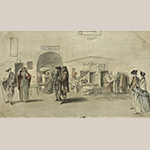
![Fig. 4: Locations of Edinburgh and Prestonpans highlighted on a detail from the north center sheet of “Map of the Three Lothians” by Andrew Armstrong and Mostyn Armstrong and engraved by Thomas Kitchin, 1773, Edinburgh. Ink on paper; on map of six sheets; HOA: 34”, WOA: 60”. Reproduced with the permission of the National Library of Scotland, shelfmark EMS.s.464 (online: http://maps.nls.uk (accessed 5 April 2016]).](https://www.mesdajournal.org/files/Jackson_Leath_Fig_04_Thumb.jpg)
![Fig. 5: Locations of Edinburgh and Duddingston highlighted on a detail from the north center sheet of “Map of the Three Lothians” by Andrew Armstrong and Mostyn Armstrong and engraved by Thomas Kitchin, 1773, Edinburgh. Ink on paper; on map of six sheets; HOA: 34”, WOA: 60”. Reproduced with the permission of the National Library of Scotland, shelfmark EMS.s.464 (online: http://maps.nls.uk (accessed 5 April 2016]).](https://www.mesdajournal.org/files/Jackson_Leath_Fig_05_Thumb.jpg)
![Fig. 6: Locations of Fishmarket Close, the Market Cross, Niddry’s Wynd, Multree’s Hill, and Baillie Fife’s Close highlighted on a detail from “The Plan of the City and Castle of Edinburgh,” drawn by William Edgar and engraved by Paul Fourdrinier, 1765, London. Ink on paper; HOA: 11-3/4”, WOA: 23-1/2”. Reproduced with the permission of the National Library of Scotland, shelfmark EMS.s.55c (online: http://maps.nls.uk (accessed 5 April 2016]).](https://www.mesdajournal.org/files/Jackson_Leath_Fig_06_Thumb.jpg)
![Fig. 7: Locations of Edinburgh and Gilmerton highlighted on a detail from the north center sheet of “Map of the Three Lothians” by Andrew Armstrong and Mostyn Armstrong and engraved by Thomas Kitchin, 1773, Edinburgh. Ink on paper; on map of six sheets; HOA: 34”, WOA: 60”. Reproduced with the permission of the National Library of Scotland, shelfmark EMS.s.464 (online: http://maps.nls.uk (accessed 5 April 2016]).](https://www.mesdajournal.org/files/Jackson_Leath_Fig_07_Thumb.jpg)
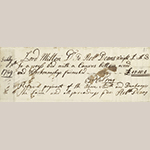

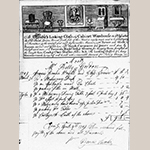
![Fig. 11: Locations of Edinburgh and Brunstane House highlighted on a detail from the north center sheet of “Map of the Three Lothians” by Andrew Armstrong and Mostyn Armstrong and engraved by Thomas Kitchin, 1773, Edinburgh. Ink on paper; on map of six sheets; HOA: 34”, WOA: 60”. Reproduced with the permission of the National Library of Scotland, shelfmark EMS.s.464 (online: http://maps.nls.uk (accessed 5 April 2016]).](https://www.mesdajournal.org/files/Jackson_Leath_Fig_11_Thumb.jpg)
![Fig. 12: Location of Milton House highlighted on a detail from “The Plan of the City and Castle of Edinburgh,” drawn by William Edgar and engraved by Paul Fourdrinier, 1765, London. Ink on paper; HOA: 11-3/4”, WOA: 23-1/2”. Reproduced with the permission of the National Library of Scotland, shelfmark EMS.s.55c (online: http://maps.nls.uk (accessed 5 April 2016]).](https://www.mesdajournal.org/files/Jackson_Leath_Fig_12_Thumb.jpg)
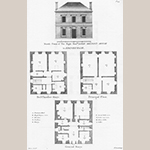
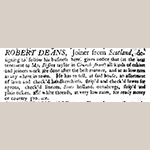
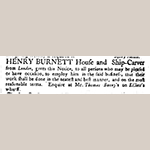
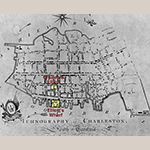
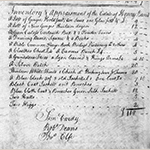
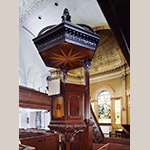
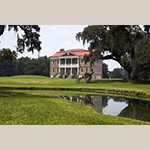
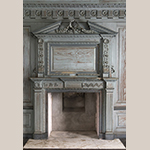
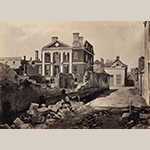
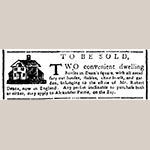
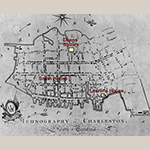
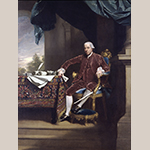
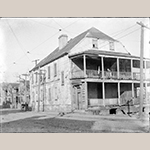
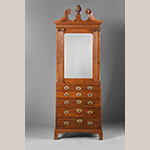
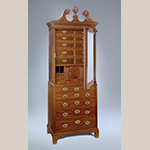
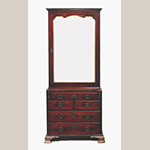
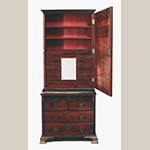
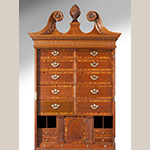
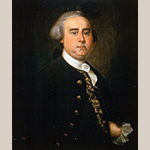
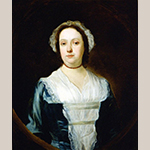
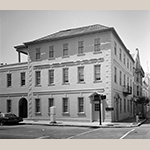
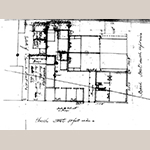
![Fig. 35: Plate XXVI from "Palladio Londinensis: Or, The London Art of Building" by William Salmon (London: J. Rivington, et. al, 1767 [seventh edition]).](https://www.mesdajournal.org/files/Jackson_Leath_Fig_35_Thumb.jpg)
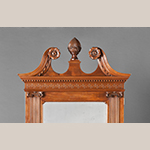
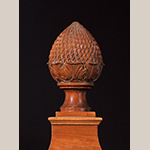
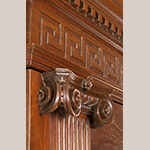
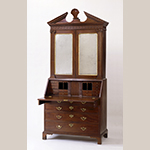
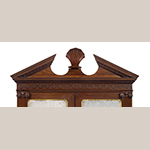
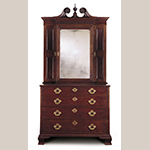
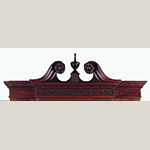
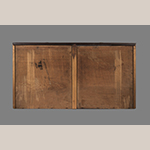
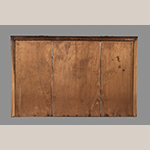
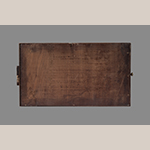
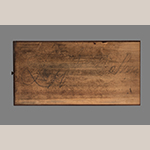
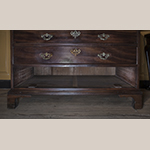
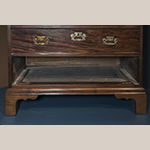
![Fig. 49: Location of Fludyer Street highlighted on a detail from “New and Accurate Plan of London and Westminster,” published by John Cary, 1795, London. Ink on paper; HOA: 28-1/2”, WOA: 48-1/2”. Reproduced with the permission of MAPCO Map and Plan Collection Online (online: http://mapco.net/cary1795/cary.htm (accessed 5 April 2016]).](https://www.mesdajournal.org/files/Jackson_Leath_Fig_49_Thumb.jpg)
![Fig. 50: Locations of Fludyer and Chandos streets highlighted on a detail from “New and Accurate Plan of London and Westminster,” published by John Cary, 1795, London. Ink on paper; HOA: 28-1/2”, WOA: 48-1/2”. Reproduced with the permission of MAPCO Map and Plan Collection Online (online: http://mapco.net/cary1795/cary.htm (accessed 5 April 2016]).](https://www.mesdajournal.org/files/Jackson_Leath_Fig_50_Thumb.jpg)